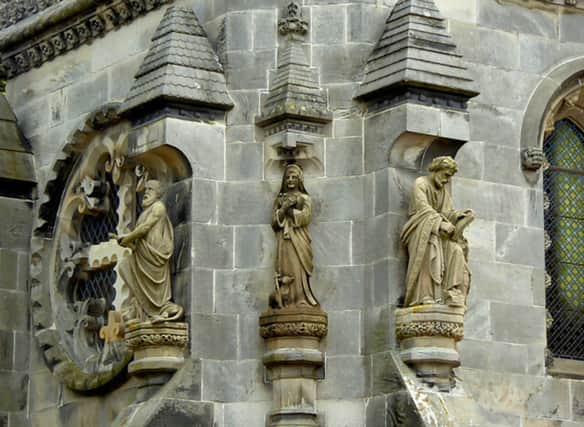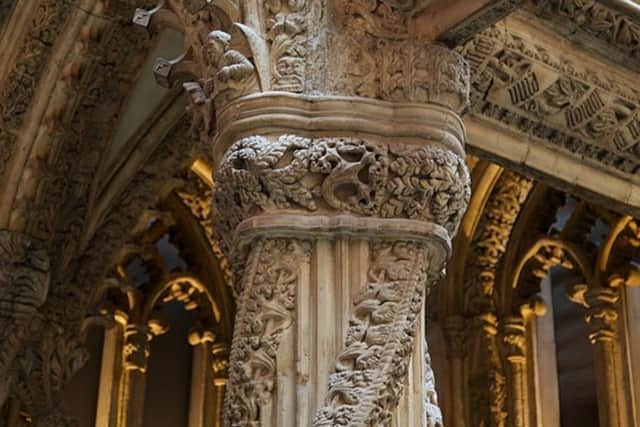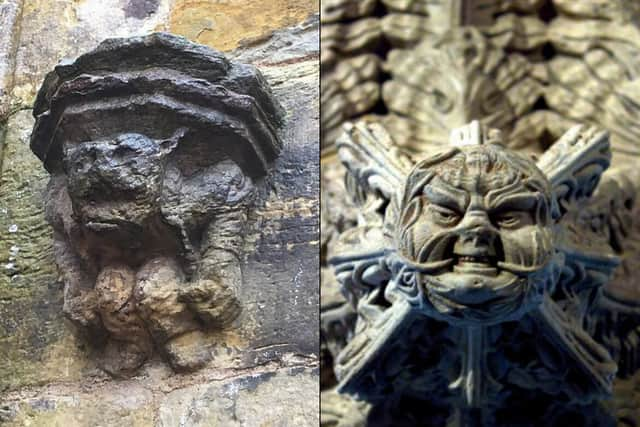The Scottish chapel near Edinburgh where statues of angels play bagpipes, Da Vinci Code filming location


Scotland has many unsolved mysteries peppered throughout its history. From mythological beasts to cryptic stone circles, one is never far from an oddity while exploring the Scots landscape. Even in the famous capital city, Edinburgh, local walks lead to all sorts of fascinating locations including the awe-inspiring Rosslyn Chapel.
This historic building is one of the most popular must-visit attractions for visitors to Scotland and there is little surprise as to why. As Wilderness Scotland explains: “The legends and mythologies surrounding this historic chapel make it one of the most mysterious and magical chapels in the world.
Advertisement
Hide AdAdvertisement
Hide Ad“Recently made more famous by being a main feature point in the novel ‘The Da Vinci Code’ by Dan Brown it has enticed readers from across the globe to visit it and the area around the village of Roslin.”
The ancient Scottish architecture boasts intricate carvings, enigmatic symbols and a thought-provoking locale, hence why it was a perfect choice as a filming location for the recent film “The Da Vinci Code”.
To unearth the secrets of Roslin Glen and dig a little deeper into what makes this location so special, here is an overview of the Rosslyn Chapel including its history and whereabouts.
What is the Rosslyn Chapel?
Formerly entitled the Collegiate Chapel of St Matthew, the Rosslyn Chapel is a 15th-century house of worship nestled within the village of Roslin in Scotland. Founded in 1446, the site was already one of the most famous of its kind in Scotland but in the past few years became even more revered after featuring in ‘The Da Vinci Code’ movie starring Tom Hanks.
According to Secret Scotland: “Rosslyn Chapel is an architectural wonder: although it was never completely finished, it has impressive features such as a sculptured ceiling of stars, roses and a dove with an olive branch ( a symbol of the Knights Templar).
“The skill and art in the stone carvings is amazing and evidence of a tremendous craft that has now been lost.”
The intricate stonework captivates visitors with the “Prentice Pillar” going especially well-admired. According to legend, it was carved by a stonemason’s apprentice while his master was away. Upon returning, the master mason gazed upon the pillar and was astonished by the craftsmanship, understanding that the talent of his apprentice far outweighed his own.
Thus, the master mason killed his talented underling with a firm swing of his mallet. No official corroboration exists for this, however, it is simply a legend.


History of the Rosslyn Chapel
Advertisement
Hide AdAdvertisement
Hide AdConstruction of the chapel commenced in 1446 by William St. Clair, the third and final Prince of Orkney. At this time in the Middle Ages, during the early years of the Renaissance era, the building was highly ambitious in terms of its architectural design. Originally, it was intended to be a cruciform church with a tower in its centre. The design seen today, however, reflects William St. Clair’s vision more so.
Historic UK reports: “His progress was slow; attention to detail and striving for perfection took precedence over speed, which left the Chapel with only the east walls, the walls for the choir and the foundations for the nave finished by the time of his death in 1484.
“It was documented, in 1700 by Father Richard Augustine Hay, that Sir William inspected hundreds of images all modelled in wood for each carving, before making a final decision on the design and allowing masons to carve in stone.”
They continue: “Sir William was buried beneath the unfinished choir, which was completed and roofed shortly afterwards by his son, and then building ceased.”
The building continued being used for worship by the St Clair’s during the 1500’s but this ultimately led to problems during the Scottish Reformations as the family practised Catholicism. At that time, people were expected to choose between Protestantism or Catholicism and many deadly clashes resulted in this conflict with churches under siege too.
Rosslyn Chapel ‘fell into disuse’ but was not outright destroyed, however, and some attribute this to the attack on Rosslyn Castle nearby. It is said that Oliver Cromwell and his men left their horses in the chapel while focussing their attention on the castle, thus sparing the chapel.


Rosslyn Chapel Carvings and Symbolism
Rosslyn Chapel is covered in expertly crafted stone carvings of which, according to The Old Millhouse, 110 are “Green Men” which are carved faces with greenery/leaves incorporated into the design. They explain: “These are an homage to the Pagan Gods pre-Christianity.
“Given that the chapel was built as a Christian place of worship, it is extremely odd that these Pagan symbols drape throughout the chapel.”
Advertisement
Hide AdAdvertisement
Hide AdOther curious carvings portray biblical figures such as the Devil or Angels (that are playing bagpipes.)
How can I get there?
The Rosslyn Chapel Trust explains: “Just seven miles south of Edinburgh’s city centre and close to the Scottish Borders, Rosslyn Chapel is easily accessible, whether travelling by car, bus, train, bicycle or on foot.
“The Chapel is located within the village of Roslin, off A701. Look out for the brown tourist signposts as you approach the village.
“For satnav, our postcode is EH25 9PU. There is free parking at the Chapel where cars are parked at the owner’s risk.”
Rosslyn vs Roslin: What’s the difference?
According to the trust: “Over the years, there has been little consistency in the spelling of ‘Rosslyn’ with the village of Roslin still spelled differently from the Barony for which it was named.
“The Trust uses the ancient spelling, Rosslyn, except when referring to the village or in quoted material.”
This phenomenon is common all over Scotland. If you know how to read a Scottish map, you’ll already know that most Scottish place names are inconsistently anglicised from other languages such as Gaelic. In the case of Rosslyn (or Roslin) this same shaky process has likely resulted in the different spelling variants scattered locally.
Comments
Want to join the conversation? Please or to comment on this article.
